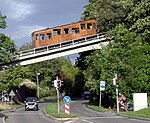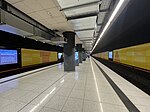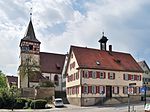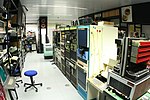Buberlesbach
Baden-Württemberg river stubsRivers of Baden-WürttembergRivers of GermanyTributaries of the Neckar

The Buberlesbach is a small river in Baden-Württemberg, Germany. It flows into the Sommerhaldenbach in Botnang, a Stadtteil of Stuttgart.
Excerpt from the Wikipedia article Buberlesbach (License: CC BY-SA 3.0, Authors, Images).Buberlesbach
Kauffmannstraße, Stuttgart Botnang
Geographical coordinates (GPS) Address Nearby Places Show on map
Geographical coordinates (GPS)
| Latitude | Longitude |
|---|---|
| N 48.7789 ° | E 9.1236 ° |
Address
Kauffmannstraße 15
70195 Stuttgart, Botnang
Baden-Württemberg, Germany
Open on Google Maps






